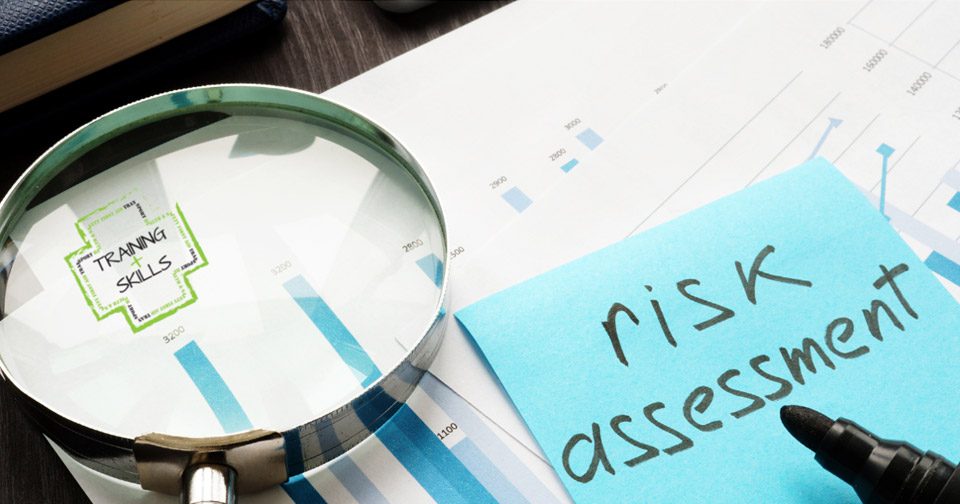Should you hear a mention of health and safety, then you can be sure that risk assessments are not far behind.
If they’re something that you’re not familiar with then the idea of completing one can seem intimidating.

What is a risk assessment?
A risk assessment is both a process and a document. It’s where you think about an activity or situation and work out what the risks might be as well as how to mitigate them.
It’s a similar process to thinking about whether you need an umbrella when leaving the house. You’ve looked at the activity you’re about to do (going out) and noted that it might rain (the risk). You are then looking at the likelihood of rain and what you can do to stop yourself from getting soaked.
Carrying out risk assessments is a legal requirement for all businesses and organisations in the UK. Different types of risk assessments may include stress, manual handling and display screen equipment (DSE). You might also carry out risk assessment for projects, events and products.
Why are risk assessments important?
The main purpose of a risk assessment is to keep people safe while preventing injuries and accidents. They can also make a business more efficient as the likelihood of disruptive incidents is potentially reduced as is damage to property.
How to carry out a risk assessment
1 - Start by identifying the hazard
Look at a specific situation, activity or location. This could be a team, a location, an event or a process. Think about what might potentially cause harm and disruption.
In the case of a team, this might be looking at what could cause disruption, such a high percentage of staff being on sick leave at the same time. For a location, event or process, look at what could go wrong and result in harm. This could be a trip hazard, dangerous substances or machinery. Look at earlier incidents in the organisation and see how they relate.
Remember risks assessment aren’t just for your staff. They can also apply to members of the public who visit or use you premises or take part in activities you are planning. So, a risk assessment for a school fete needs to account for the staff and volunteers organising it, businesses taking part and the members of the public attending it.
2 - Assess the risks
The next task is to assess these risks. How likely are they to happen? What can you put in place to eliminate or rescue the risk? Control measures will vary widely but should be specific. For a chemical hazard, it may be around careful processes and training to deal promptly and effectively with any accidents. For a workplace, it may be signage to remind people of trip hazards, like steps, or regular discussions about workload and capacity. This is why risk assessments are individual to the situation and circumstances.
3 - Review the risk regularly
The risk assessment should be reviewed regularly to ensure that it is still up to date and that the control measures are effective.
Getting support with risk assessments
Risk assessments are a legal requirement and a way to reduce harm. If you’re not confident with them then look to get support.

